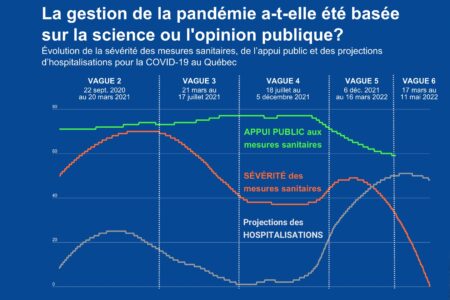
Amidst the disruptions to Canada’s economy during the emergence of COVID-19, there were concerns of a recession that would damage markets to a point not seen since the Great Depression. In response, ambitious narratives emerged within civil society suggesting the pandemic had opened a once-in-a-century policy window through which pre-existing considerations outside the frame of mainstream discourse were coming into view. There was “no going back to normal,” some headlines rang.
But how will the “new normal” be constructed and what data will be used? Different languages and ideas have been used to define the economic recovery that shapes the solutions competing for policy-makers’ interests.
For example, concepts like a just transition, a green transition, a Green New Deal for Communities and #BuildBackBetter have been positioned within the realm of the possible. These visions for Canada’s recovery include ambitious high-level actions such as a wealth tax, increased paid sick leave, universal child care and a guaranteed basic income.
In contrast to this, traditional voices from the business community have framed the recovery as an issue of collective demand, using familiar indicators like gross domestic product or oil prices and housing sales as the ultimate signposts, freed of principles like justice, equity or inclusion.
Identifying how these divergent descriptions and approaches can be connected in the interest of policy coherence will be important as Canada seeks to find its way out of the crisis.
But while ambitious visions for a recovery with the potential to transform Canada can ignite our political imagination, we should be wary of presuming that general concepts like green jobs and a wealth tax will translate into specific benefits for those affected most by COVID. A just recovery should also be a specific recovery. This doesn’t have to limit it in its broader scope and transformative potential, but it should be the starting point.
As the chief public health officer of Canada’s October 2020 report on the state of public health in Canada makes clear we know those most affected by the pandemic have been:
- Workers in low-wage jobs and especially those in food services, accommodation and retail trade,
- Women and especially mothers of school-aged children,
- Workers who are racialized, immigrant and/or Indigenous,
- Youth and post-secondary students.
As many feared, unless policies are introduced to change the current trajectory, Canada appears to be in a “K-shaped” recovery in which higher-income earners have emerged relatively unscathed while many people in the above groups are still struggling.
Some Canadian voices from finance, banking and corporate management have shown they aren’t blind to this. As Tiff Macklem, governor of the Bank of Canada said to the Canadian Chamber of Commerce in September of 2020 when surveying the early damage of the pandemic’s recession: “Young people and women are more likely to have been laid off permanently. On average, people who are permanently laid off take twice as long to return to work as people on temporary layoff. This risks long-term damage to their prospects.”
This was echoed by former senior deputy governor of the Bank of Canada, Carolyn Wilkins, when she noted in remarks to the Munk School of Global Affairs and Public Policy in November 2020: “The hardest-hit sectors include recreation and hospitality, which employ many young people, recent immigrants and women. These groups are particularly at risk of being left on the sidelines for an extended period.”
In applying an equity lens to the potential of Canada’s recovery, Rotman School of Management professor Sarah Kaplan has emphasized aligning Canada’s recovery with the United Nations sustainable development goals. She does so while highlighting the growing movement within the private sector toward the idea of “stakeholder capitalism” in which corporate leaders are showing interest in aligning corporate strategy with social development and environmental sustainability goals.
Should a constructive space be created for the discussion, voices like the Council of Canadians, Sierra Club, the Royal Society of Canada, labour unions or others who provide reminders of Canada’s need to commit to reconciliation, decarbonization, justice, equity and inclusion, have much to offer. There is no shortage of ideas from these and similar organizations on ways to push Canada’s corporate sector in a better direction with bold visions of Canada’s recovery. But at some point, the discussion needs to get specific.
Use policy tools like community benefits agreements, which commit those in charge of large projects to hiring from equity-seeking communities. Or implement social procurement frameworks, which can guide private and public sector actors to use their purchasing power strategically to support social enterprises, businesses owned by women, Black, Indigenous and racialized peoples, and others. These can play valuable roles as we focus on this national discussion and are just two examples in a vast toolbox of policy options. This is where the meaningful exchange of ideas and perspectives between civil society, the private sector and key affected populations can be instrumental, especially where government funding is involved.
Ensuring that the recovery benefits those Canadians hurt the most by the crisis will also require disaggregated data, to take us beyond simple metrics like GDP and jobs. GDP for whom? Jobs for whom? The price of Canadian oil, housing sales and cross-border trade volume will not tell us how well single mothers of school-aged children, urban Indigenous workers, or recent immigrants in the long-term care sector are doing a year from now. If 40 years of neoliberalism have taught us anything, it is that a rising tide does not lift all boats. We have to be both universal and targeted in our approaches.
All levels of government in Canada have a rare opportunity to invest in constructive engagement and good process to help us bridge the intellectual spaces of social policy and economic policy, civil society and industry, and involve industries and populations hit the hardest by the pandemic in meaningful and authentic ways. Together, a whole-of-society effort can foster a recovery that is specific to the current crisis while shaping Canada into a more prosperous, equitable and resilient country. That’s an investment worth making. That’s a bridge worth building.
Photo: Fast-food workers in a Coquitlam, B.C., shopping mall. Shutterstock.com, by Icatnews








